Smith River Information
Overview / Why The Smith River
Montana’s Smith River is one of the most well known overnight floats in the state, arguably the most well known. For good reason too! The Smith River that jumps to mind is encompassed by the Smith River State Park, 59 river miles of deep canyons, incredible campsites, epic trout fishing, and the adventure of a lifetime.
We have a Complete Guide To The Smith River that covers more details of the trip itself, you can find that here.
This page will provide some basic information on the Smith River, and more specifically on the overnight float trip opportunities and permitting required to float it.
Smith River Basics
The forks of the Smith River rises high in the mountains of Central Montana, flowing down toward White Sulphur Springs and the Smith River Valley. The South Fork and North Fork combine just out of White Sulphur, and flow north. Up until Camp Baker and the start of the Smith River State Park, anyone is able to float, fish, camp, and otherwise recreate on the river.
But the real draw of the Smith River is in the state park. You’ll find 59-river miles of remote floating, boat camping, a deep canyon that almost feels like you’re in another world, excellent fishing, and a sense of adventure and detachment from the real world that is hard to replicate.
There are 27 boat camps with 52 campsites in the state park, spaced at distances that allow you to customize your trip and length of each float day. These sites are located on a mixture of National Forest land, FWP land, DNRC state land and leased private land. These sites are remarkable, each with its own unique advantages and beauty.
A float down Montana’s Smith River is something to hope for, look forward to and thoroughly enjoy. Whether you’re bringing the whole family or just your buddies, are planning to pleasure float it or fish it hard, the Smith is well worth the effort.
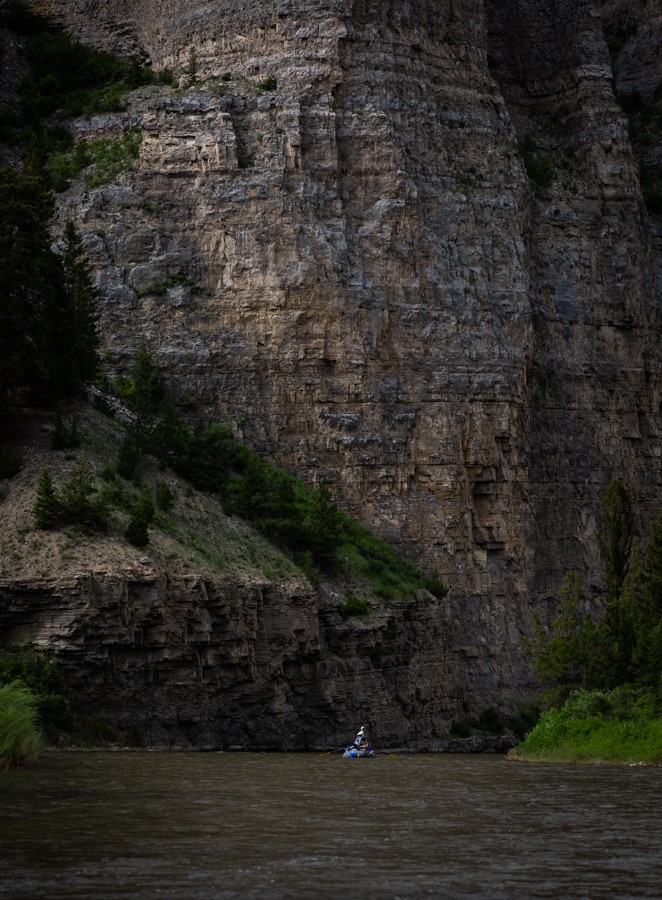
Application Process and Strategy
Drawing one of the coveted launch permits does take some advanced planning and work. Montana Fish, Wildlife and Parks puts on the lottery drawing in late winter every year. 2024 saw some pretty major changes to the process, providing the first update in a few years. Floaters are required to have a permit to float the Smith River between April 1 and August 15th every year.
February 14th is the application deadline. Put that one in your calendar now with an alert a few days or a week in advance. Don’t trust yourself to remember it – take it from us, you get busy and things happen and then you’ll remember the date as soon as it’s too late to apply.
2024 is the first year that FWP is offering Bonus Points for the Smith River. If you are unfamiliar with the system, the bonus point basically offers you additional chances to draw in the lottery. Each year you buy one point, which stacks up over time to increase your chances.
The lottery is random, but there is some basic strategy to keep in mind. It’s helpful to gather your group before the deadline and agree on an ideal launch date. If everyone in your party applies for the same date, your odds go up. There is some debate on if early or mid-week days are easier to draw than Thursday-Saturday launch dates.
Dates in peak season (May 15-July 15) are going to be the most challenging to draw. Going earlier in the year runs the risk of low water and poor weather, but an April date has better odds. Anything after August 15th does not require a permit, but you have to be quite mindful of flows at that point.

Rules, Regulations, and Etiquette of the Smith River
Being a state park, and a very popular float, there are some rules and regulations to be aware of. Most of these are pretty common sense – such as take your trash with you. Don’t litter. Make sure your campfire is dead out before you leave. Follow all fishing regulations.
You can view the entire run of regulations for the Smith River and Smith River State Park on their website. This is a very special place, and it’s important to follow all the rules to ensure we all get to take part in it for years to come. If you have ANY questions about any of the rules and regulations, reach out to the rangers at the state park. They have the final say, and they are the experts.
When floating Montana’s Smith River there are a few things to keep in mind. First off is the place itself. The Smith River holds a special place in the hearts of many, and generations of people have enjoyed, loved and respected it. Treat it well.
When breaking camp, take care to inspect the grounds before you leave. Ensure every piece of trash, gear, and any sign of your being there is picked up and taken with you. Don’t leave beer cans and foil in the fire ring. Leave it as pristine as you found it, or even more so.
ALWAYS make sure your fire is completely extinguished and dead out before you leave. This is just general knowledge that is important to follow no matter where you are, but especially here. The river is never far from the fire ring, get some water and put it dead out. Never leave a fire until you are absolutely certain it’s out, and you don’t feel any heat in the coals.
Follow all the rules and regulations of the Smith River. Montana FWP has put together a handy Floater Information Packet, be sure to read it thoroughly and be familiar with the information within before your trip.
Be kind to everyone out there. You’ll be encountering the other folks enjoying the Smith River during your float. Everyone is here for the same reasons, we all want to enjoy it and savor the experience. Treat everyone with respect, give them their space, and everyone will have a good time.
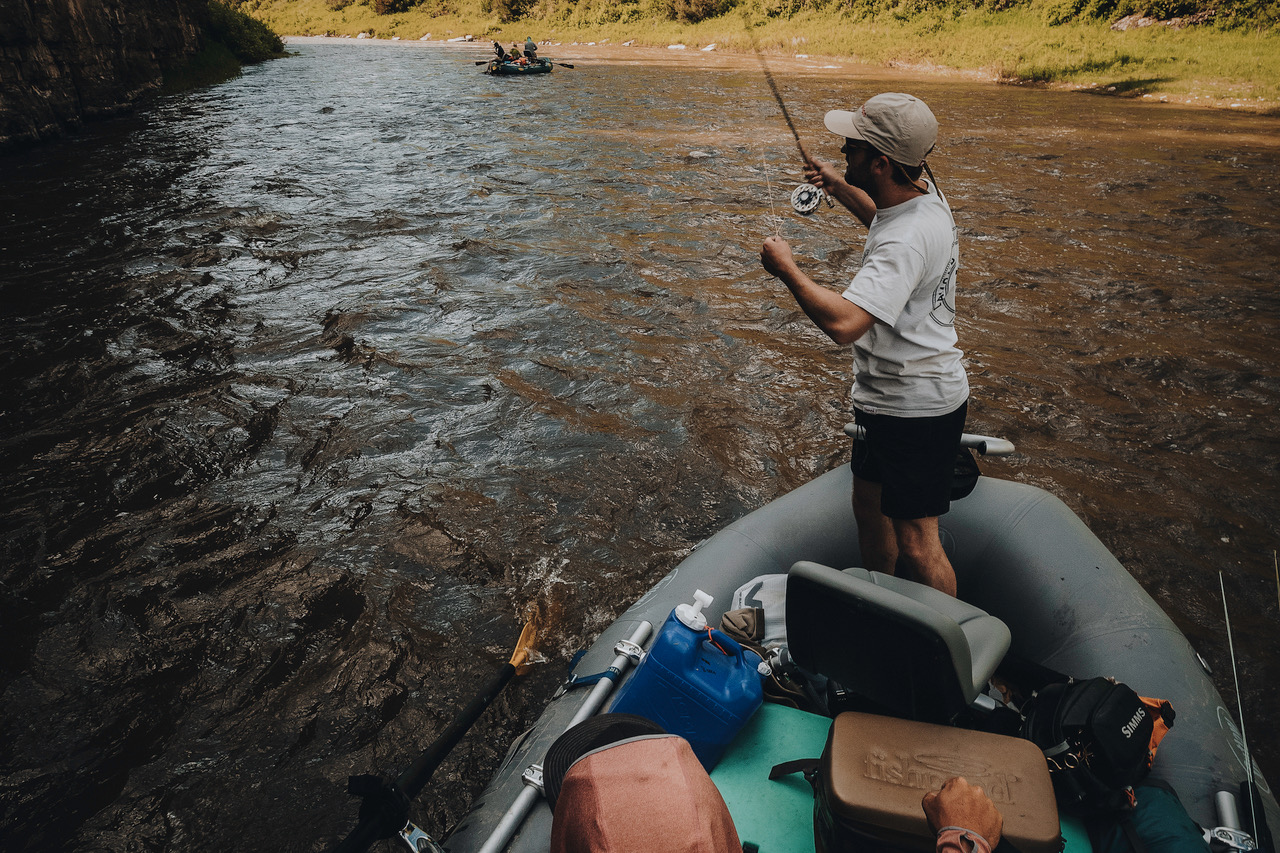
Bear Safety on the Smith River
Keep in mind that you are still in Montana, you are still in Bear Country, and you do have the chance to encounter wildlife during your trip. Bears aren’t a major problem on the Smith River, but it’s important to be aware of them and take some appropriate steps to mitigate any encounters.
An IGBC (International Grizzly Bear Coalition) certified bear proof cooler is required by law, and all food must be secured when not being used. What that means is you have to lock your cooler at night in an approved bear proof fashion. If you have any questions about this, ask the ranger before your trip.
As with any outdoor recreation in Montana, it’s a good idea to carry bear spray with you on the Smith River. You’re not very likely to ever need to use it, but far better to have it and not need it than the other way around.
Following basic bear safety rules in camp is important. Make sure all food is contained (as mentioned above), don’t leave trash laying around, if food spills during dinner do your best to pick it up, don’t have any food or snacks in your tent at night. All these things are common knowledge when you’re camping in bear country, and just because it’s a unique trip doesn’t mean they don’t apply here. Just use your head and be smart about it.
Equipment for the Smith River
The first and most obvious piece of kit for the Smith River is the watercraft itself. While you can float it in a raft, drift boat, canoe, or even a rubber ducky if you’re so inclined, we highly recommend an inflatable raft. There are several key reasons for this. Rafts are load hauling machines. It’s easier, safer, and more comfortable to put a heavy load in a raft than it is a drift boat. They’re easier and safer for novice oarsmen to handle, which can be a definite advantage in the tight quarters of the Smith River. Rafts are incredibly versatile too. By adjusting the frame you can set up a pleasure boat, load hauler, or hardcore fishing vessel.
We definitely recommend a rowing frame on your raft. This makes it much easier to control, as well as organize gear. If you’re planning to fish during your trip, a fishing frame with standing platforms and knee braces can make a world of difference.
Here at Hatch Adventures we are pleased to offer NRS Slipstream fishing raft packages for rent. These are set up to be the ultimate adventure fishing raft, with a fly fishing specific frame that is comfortable and efficient on the water. The Slipstream is made for maneuverability and rowing prowess, perfect for positioning an angler where he needs to be. For an overnight trip like the Smith, plan on two people per boat. Included with your rental is a trailer, raft, frame, oars, PFD for each person, a dry box, a IGBC certified bear proof cooler, and a first aid kit. Learn more here (LINK)
Why did we chose the Slipstream for our rental fleet? No, they aren’t optimized for simple load hauling, which you often see available for Smith River trips. The NRS Slipstream is a mission-built fishing platform that just happens to moonlight as the perfect overnight trip boat. Some of things that stood out to us when we were thinking through options are:
- High volume tube and floor design that keeps the raft higher in the water, making skirting through skinny water easier.
- Incredibly durable design from the wear patches on the bottom and top, to the welded seams, and ultra high quality PVC material.
- The drop stitch floor provides a comfortable and stable platform to stand on and fish from.
- A fishing frame that is actually designed for fishing. The thigh hooks are remarkably stable, rod holders keep your rods out of harms way, and a layout that makes sense for gear organization and usability.
- An internal anchor system that keeps the anchor line clear and allows for easy deployment and use of the anchor system.
There are many advantages to the NRS Slipstream. At the end of the day, and what we think matters most for our customers, is the fact that these boats are just plain fun to row. They ride well, their design makes them nimble and maneuverable, and they’re just fun. If you aren’t sure about it before your Smith River trip, rent one for a day and try it out!
Canoes are a popular alternative, used mostly by smaller parties and those seeking to get a quick trip in. Being faster and more maneuverable, you could realistically get down the 59-miles with a single night stay. The patrolling rangers use canoes to quickly move down the river and check in with everyone during the float.
With your watercraft, a dry box and cooler are important. A dry box not only keeps your gear out of the elements, but organized and within easy reach. It’s perfect for raft gear, first aid kits, cameras, snacks, and an easy place to stash your jacket.
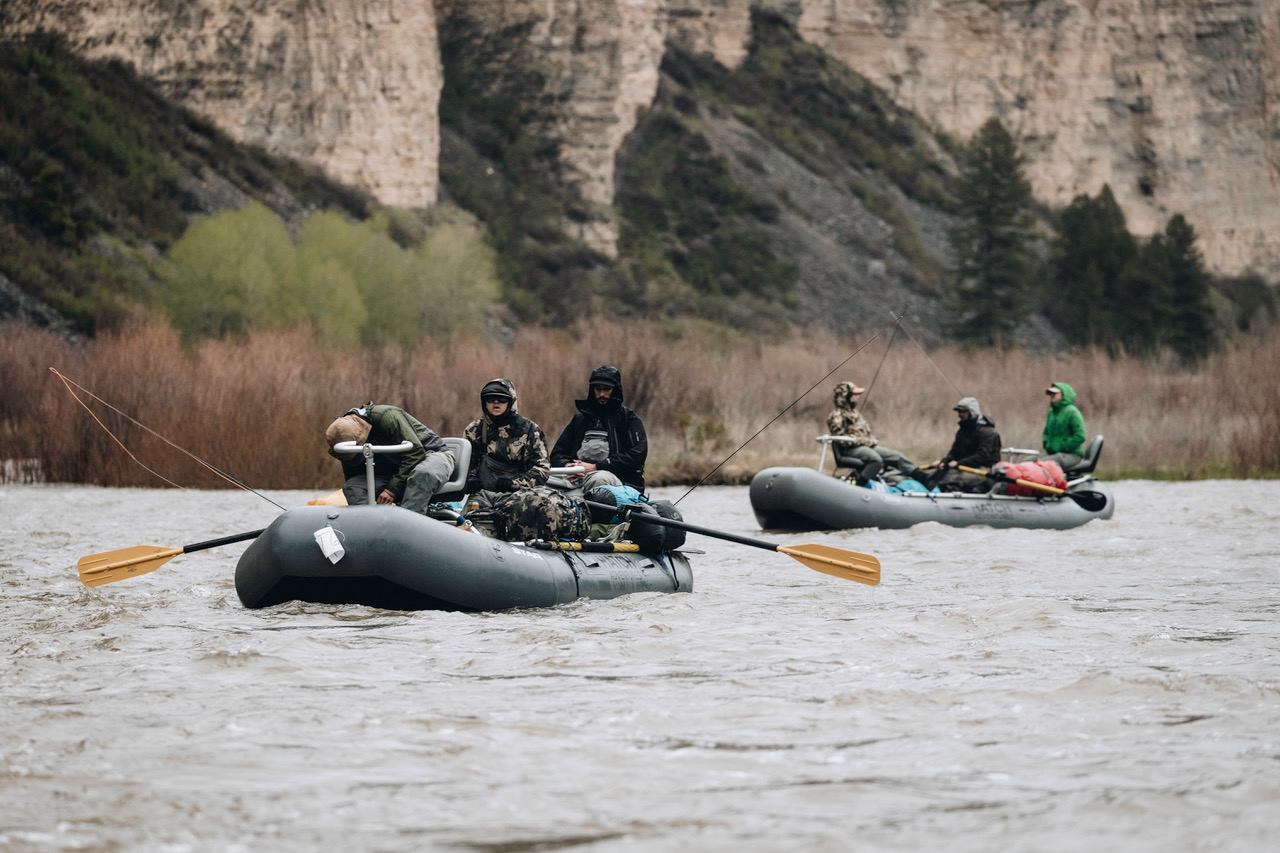
The cooler you bring must be big enough to handle all your food and cold drinks, and keep ice for the duration of the trip. Also, all coolers on the Smith River must be IGBC certified bear proof. All food and drink must be secured when not in use, so that means locking it up at night.
Make sure to properly pre-chill your cooler before the trip, pack it well and carefully with no major air pockets or empty spaces, and only have it open when you absolutely need it. If you take the steps to put ice cold things in a cold cooler, pack it right, and don’t leave it open all the time you’ll be impressed at how long ice can last. Freezing pre-made meals is a great way to store that food and they will act as ice blocks to keep it cold. A wadded up t-shirt can help take up empty space in a cooler and maintain a cold atmosphere.
Meal planning can seem like a daunting task, but if it’s distributed among the group it’s not too bad. If you’re an inexperienced camp cook, keep in mind that simple is best. If you can pre-cook and freeze meals that just have to be reheated in camp all the better. However, the Smith River is a great place to splurge and get fancy for at least one night. Another perk of a float trip is being able to carry a few extra luxuries.
As for camping gear, the boat camps along the Smith River are some of the very best you’ll ever have the pleasure to stay at. Your camp kit entirely depends on what you’ve got, and how large your group is. Some opt to take large wall tents with cast iron stoves and all sleep in one tent. Cots are a nice piece of kit in a wall tent setup. Backpacking tents provide more privacy and take up less room in a boat. If the weather is nice, a hammock isn’t the worst option if you don’t mind a few mosquitos here and there. For early season trips, having a place to hang wet clothing and be warm out of potential cold rain or snow is really nice.
One of the items that is a must is a big tarp. This can hang over your kitchen area, by the fire, or anywhere people tend to gather. Perfect for some shade if you find yourself in an open campsite on a hot summer day, as well as the ideal shelter for rainy afternoons in camp. An extra length of rope is a nice addition to a tarp kit, and something that will be more useful than you think.
Bring plenty of lanterns for good lighting, camp tables since the campsites don’t have those, and comfy chairs to sit and enjoy the incredible Smith River canyon in camp. Sitting in a comfy camp chair by a good fire and watching the evening light on the canyon walls is a memory that will stick with you forever.
Speaking of firewood, it’s recommended to bring your own. Each campsite has a good fire ring, but firewood is scarce on the Smith River. You don’t want to run out, and you can’t count on finding it in camp. You can either bring your own or buy it in White Sulphur Springs before you head to Camp Baker. Plan on at least 1-2 bundles per day.
One of the most important things you’ll need to bring with you, and a new regulation for 2024, is a portable toilet. Sadly, the famous pit toilets of the Smith have been discontinued, and all human waste must be packed out. FWP has provided a list of approved portable toilets. There are waste disposal facilities at the take out at Eden Bridge. Most overnight floats in other states require this already, so for many people this is just standard procedure.
When packing your personal items and clothing, keep in mind that you are still in Montana and the weather can change drastically at any point. You won’t have the chance to go back and get anything once you’ve launched, so bring what you need. At the bare minimum, pack a change of clothes, a warm jacket, and a good rain jacket. No matter the season or time of year, always bring a warm jacket.
A good pair of river sandals is really all you need, but a pair of camp slippers or shoes is nice to put on when you’re off the water. A warm hat and gloves can be nice on cold mornings and long nights around the fire. Whatever you need to be comfortable, bring it. A waterproof duffel or dry bag is imperative to keep your gear dry and clean in the boats all day.
Don’t forget to pack something fun. Camp games are always a win, even if it’s just a deck of cards. If you’ve got the family and kids with you, bring a bunch! Most of the boat camps have plenty of room for games, and you’ll be spending a decent amount of time in camp each day.
Putting In, Taking Out, and the Float Itself
As you are planning your Smith River float, one of the key questions is how long does it take to float? Well, that depends. A minimum of two nights and three days is recommended for normal flows, and during peak season of May 15 – July 15 there’s a limit of four nights on the river. Of course we highly recommend taking the full limit of time to enjoy the Smith, that is if you have the time for it.
“Normal” flows are over 300cfs, and anything under 225ish is considered low. Low water means you’ll very likely be out dragging your boat at least a few times during the first day. This is when having a raft really comes in handy, as well as spreading your gear out between boats. Drift boats will struggle to float well in anything under 350cfs. Once Tenderfoot Creek flows into the Smith River around mile 16 the volume increases to a more enjoyable flow. Generally low water conditions exist until the spring runoff, and then again in summer.
The annual spring melt runoff can raise flows significantly in May and even into June on heavy snowpack years. This will make your float days quicker, so factor that in. The increase of flow can pose some challenges in the tight canyon, and require careful oarsmanship. By mid June the Smith River is generally at a normal flow, lasting until mid to late July into August. By then low flows and growing moss and weeds can pose an issue.
One of the major changes for the Smith River is registration and putting in. The classic system of “be the first one to reach Camp Baker on launch day” to put your name on the list for camp sites is out. Rangers randomize permit holders for that day and will call you several days beforehand. This phone call will allow you to pick your campsites, register your floaters, pay your float fees, and ask any questions before the trip. Make sure you have your campsites picked out and everyone’s information beforehand. Remember, each permit is limited to 15 people. Curious which campsites we think are the best? Read our “Complete Guide To The Smith River Blog”.
Another phone call you will need to make is arranging a shuttle for your truck from the put in at Camp Baker to the take out at Eden Bridge. Don’t forget about this, don’t try to self shuttle, having it done and your truck waiting for you at the end of the trip is worth every single penny. See below for links.
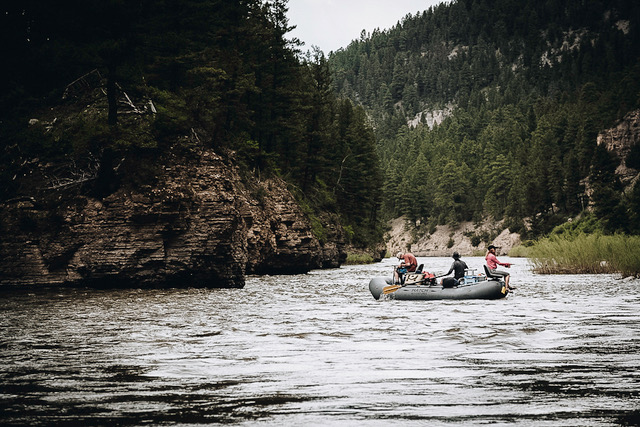
During the phone call, the rangers will give you a one-hour boat ramp launch window. When your launch day arrives, be sure to arrive at Camp Baker outside of White Sulphur Springs at least one hour before this window begins. Upon arrival at Camp Baker, you will have to check in with the ranger, get your boat tags and do some paperwork, as well as take part in a mandatory safety briefing.
This boat ramp launch window was implemented to help keep order at launch. As with any boat ramp anywhere, organization is your friend. While you are waiting for your window, make sure all your rafts are inflated and packed, gear is where it needs to be, coolers are loaded, and everything is out of the truck. The actual boat ramp is not the place to be packing dry boxes and gear bags.
Once boats are loaded, trucks are parked, an offering to good King Neptune has been poured out, and everyone is loaded up, you’re off! The first day of the float is a great shakedown, letting everyone get comfortable with raft life and taking some time to unwind. The process leading up to a Smith River trip and the actual launch day can be kind of overwhelming and stressful, but you’ll soon feel the tension just melt away.
If you haven’t already, check out our blog post “A Complete Guide To The Smith River” for more information on the trip and what to expect.
It’s amazing how fast you fall into the rhythm of life on the Smith. There is no cell reception, no real world problems, no emails to answer. Just the routine of camp, float, camp, laugh and enjoy. It’s truly an incredible experience and an excellent hard reset on life.
The take out at Eden Bridge can be a bit of a mess. Everyone’s tired, likely a bit hungover, sunburned, and cranky. The ramp can fill up quickly, so take action to get your boats on trailers and up into the parking lot before you start unpacking and breaking them down. As we mentioned above, a boat ramp is no place to have a gear explosion. Don’t be those people.
A new feature at Eden Bridge this year is the addition of two machines built to handle human waste and help clean/sanitize your portable toilet. These SCAT machines are provided by FWP and are important to use before you leave. You’ll also find dumpsters here for your trash.
Fly Fishing the Smith River
One of the large draws for the Smith River is the fishing. Primarily a brown and rainbow trout fishery, you can also find the very occasional cutthroat and plenty of native whitefish. The Smith gets the earliest salmonfly hatch of the state, and is perhaps best known for this incredible occurrence. However, fishing is solid all year long except in the low waters of late summer when river temps get too high to safely fish.
For those who drew early permits in April, you can have pretty good days with spring Baetis and midges. You’ll find them hatching best on cloudy days around midday. In the canyon depths you can have some really cool dry fly days, casting at rising fish against cliff walls looming hundreds of feet above you. Midge larvae, attractor nymphs, and stonefly nymph patterns can be very productive fished tight to the cliff walls.
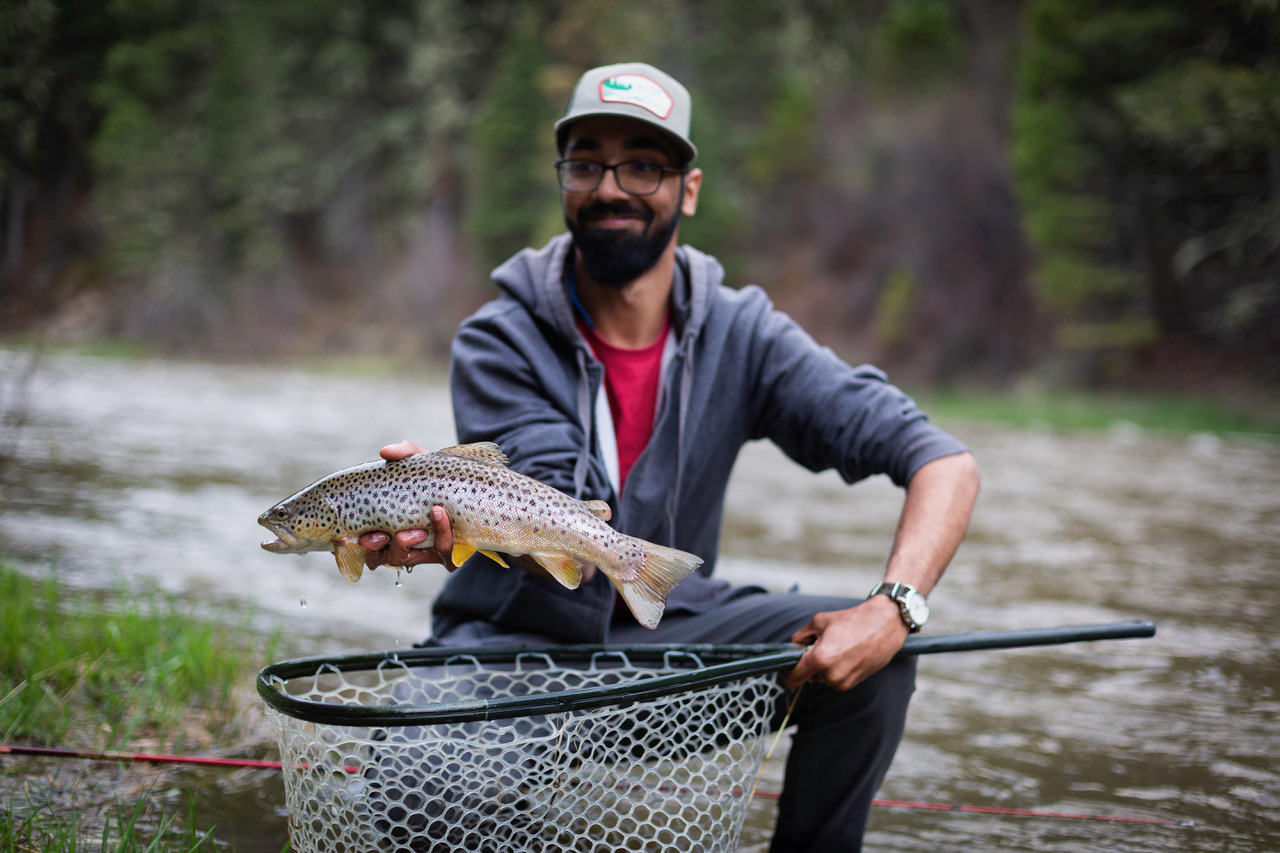
As the river transitions to spring runoff, salmonflies are on everyone’s minds. These giant bugs are one of the premier hatches across the state, as everyone chases the hatch trying to find that legendary day. Timing the salmonfly hatch on the Smith River can be tricky, as it is dependent on water temps and conditions that you simply can’t adjust your date for. Mid-May to early June is your window, make it happen if you can.
Bring lots of adult salmonflies, nymphs, and a good selection of caddis, march browns, and golden stones in this late spring window. While dry fly action might be curtailed with muddy runoff, big steamers and large stonefly nymphs are the ticket. Think dark colors in dark water, and hug the cliff walls. Bounce a streamer off the rocks, and give it a few twitches as it slowly sinks.
After runoff you’re treated to a good assortment of yellow sallies, golden stones, caddis, PMDs, and terrestrials. You do have to be mindful of water temps, as they climb quickly post runoff. For most of June and early July, it can be really good. Don’t forget chubbies and general attractor dries during this time frame.
Most of the fish you’ll catch are in that 12-14” range, with anything over 18” being a “big one”. If you’re after larger fish, focus on streamers and work hard for it. Those who are willing to put in the effort can be rewarded.
The Smith River is not known as a trophy fishery, at least as far as fish size is concerned. The real trophy is the float itself. Don’t forget to put the rod down and look up now and then.
Traveling to the Smith River From Out Of State

Here at Hatch Adventures we want to make your outdoor experiences here in Montana as easy and enjoyable as possible. Need a raft? We’ve got them. Need a vehicle to tow it with? We’ve got that too. Want to be picked up at the airport in Bozeman with your vehicle towing a raft and just head right for the river? We can make that happen.
Finding the right rental raft package for the Smith River can make planning your trip a lot easier. We think our NRS Slipsteams are the best possible options for the reasons mentioned earlier. One of the biggest issues people traveling to Montana and renting a raft face is getting a rental vehicle they can tow it with.
With Hatch Adventures, we cover the whole package. Our premium adventure vehicles are the ideal solution to tow your rental raft wherever you need to go. Get in touch with us and let’s talk!
Didn't Draw A Permit? Here's Some Options
Didn’t have the good fortune to draw a Smith River permit this year, but still have the itch to take an overnight float trip? Lucky for you, there are plenty of great DIY overnight float trips around Montana. Almost all of our rivers can play host to incredible adventures that you can structure around your goals, available time, and current conditions.
If you’re dead set on the Smith River, there is one avenue you can try. The Smith River Reservation Line is manned from 8am-12pm beginning March 4th and offers people a chance to check for unused launch dates or pick up a cancellation. These cancellations are random and often last minute, but it’s worth a phone call if you’ve got the flexibility.
We’ll have more information coming very soon, but in the meantime don’t hesitate to reach out with any questions!
Useful Links
Current Streamflows
Ideal River levels for rafting and fishing the Smith River are 250cfs – 500cfs. higher than 500cfs the water is generally dirt and the current gets significantly pushier. Below 250cfs can be fantastic fishing towards the end of the season, however dragging boats (especially the first day) may be required. Pick careful lines at low water and you can sneak through alot, especially in our rafts and when packed more like a backpacking trip than a standard luxury river trip!


